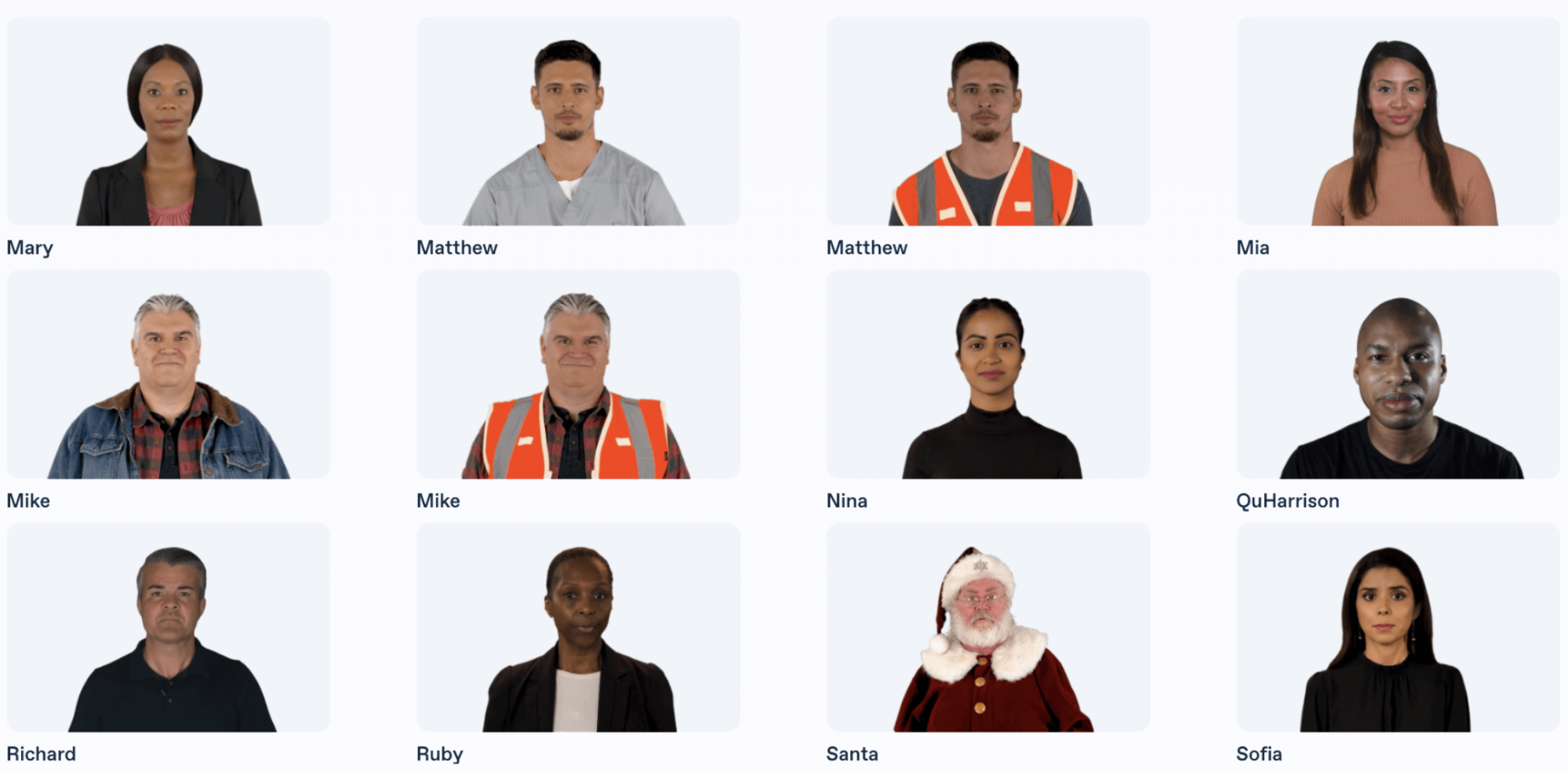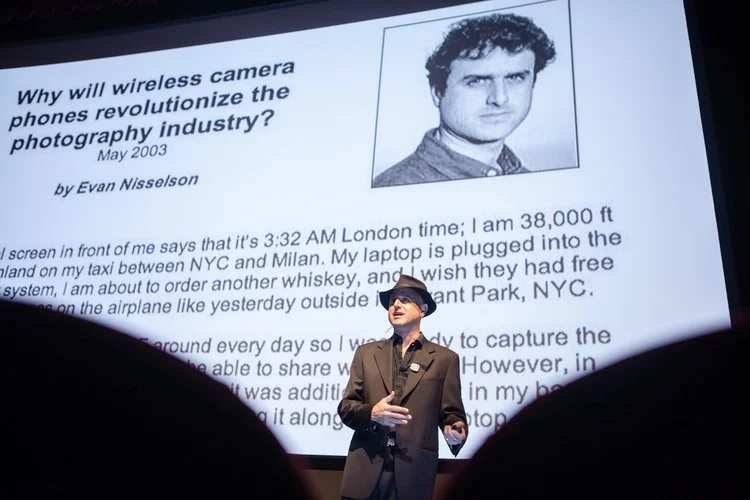Synthesia exponentially scales video production globally
/LDV Capital invests in people who are building businesses powered by visual technologies. We thrive on collaborating with deep tech teams leveraging computer vision, machine learning, and artificial intelligence to analyze visual data. We are the only venture capital firm with this thesis.
Our LDV portfolio company Synthesia launched an AI-driven video production platform amid the pandemic, and now thousands of customers – from Fortune 500 companies to individual creators – generate video content from text.
There’s no better way to showcase Synthesia than to mention the world's-first experience with Messi Messages recently launched by Lay’s. In this marketing campaign, fans create and send personalized videos from Messi himself, in multiple languages, prompting fellow fans to watch the game.
I had a chance to speak to Victor Riparbelli, co-founder and CEO of Synthesia, and ask him a few questions about the latest developments, trends, and the future of AI avatars.
Kat: The global pandemic has hit many people, companies, and industries incredibly hard. Synthesia has proven to be particularly resilient during this time and even gaining significant traction. While everyone had to follow stay-at-home orders, your platform could still generate hours of videos with just a few clicks. Can you describe the trends that you are seeing?
Victor: We launched our platform last July. We’ve been growing extremely fast over the last six and seven months because the video economy is booming. Right now, everybody wants video. That has been a trend for many years and COVID only accelerated it.
Our vision and product are all about making it easy to create video content without having to use cameras or microphones. Simply type in your script and we will generate a video with an AI presenter reading this text.
It turns out that a lot of the problems that we face with remote meetings are the same as those in a normal workday - but with this new way of working remotely, they have only become more obvious.
Let's say I have a presentation to do internally. Rather than doing that presentation three times in three separate video calls (because one person could not attend and another one had to drop out early), I can simply create a video presentation using the Synthesia platform. We're seeing a lot of companies create one or two-minute-long videos to summarize both internal and external presentations. This format of video forces you to be very straight to the point and solves the long-existing problem of presenters talking way more than needed when presenting live.
Kat: Who is your core user? What trends do you currently see and what do you envision for the next few years?
Victor: Most of our clients use us for internal communications, which is everything that falls under the learning and development umbrella. That includes onboarding, training, and corporate communications. We’ve recently published this use-case.
Clients generally use Synthesia to replace assets that would otherwise have been text such as a long email, a wordy PDF, or a confusing slide deck. Now that can become a simple video. In the future, we'll see more marketing use cases as the tech matures.
Kat: What was your most surprising insight since launching the platform?
Victor: We have thousands of customers, from Fortune 500 companies to individual creators. The most interesting thing we learned is how the quality threshold for content differs across cultures and geographies.
Synthesia videos might not be comparable to Superbowl ads yet in terms of quality. But for a local business in Brazil, a Synthesia video can be a lot better than what they were able to produce before. It all depends on what you’re comparing it with.
Most of us only ever view the top .00001% of video content that gets published. But there is a very long tail of content being created every day. For example a promotional video for a local barbershop. This category of content is for the most part not very well produced and it doesn’t have thousands of views. But it has a lot of value for the business and accumulated there is a lot of content like this. For these users, Synthesia is a shortcut to produce high-quality video without the complexities and costs of video production.
Victor Riparbelli, Co-Founder and CEO of Synthesia, gave a keynote speech at our LDV Vision Summit in 2019
Kat: How far are we from using synthetic actors (non-existent people) for Synthesia video production?
Victor: Stay tuned! It’s coming soon. Within the next 3-6 months we’ll release some very exciting technology that will make it easier to work with a persona that is unique to your brand.
Kat: You added new AI actors, different languages and accents… lots of things! What’s next? Do you plan to add hand gestures or make the speech better articulated in other ways?
Victor: On the R&D side of things, we’re working on developing gestures, emotions, body language – this will make it look and feel more like a real video.
We’re also adding a lot of video-editing features. You can now do transitions between different slides and you can create intro/outro scenes. You can add text, shapes and upload images.
In a few months, we’ll be releasing our API platform, which will make it easy to programmatically generate video content.
Let's say you have 50 retail destinations across North America, and you have sales reps working in all these stores and you need to communicate to them. How well is it going with sales? Who's currently the top performer and who's in line to win the AirPods Pro that we give out every month? What's the latest on COVID guidelines? All sorts of stuff.
The issue here is that most companies, first and foremost, don't use video right now -- instead, the office often prints out something to distribute. With Synthesia, your sales system can automatically pull out data and generate a video with the information, however often you want to. So you could, for example, receive a video that says “We are 10% from reaching this month's goal, well done Kat for outperforming everyone else! You've won the AirPods Pro.”
I believe that in the future when you sign up for any service, you'll get a personalized video instead of a long email. In that video, everything will be clearly explained and it will be generated based on the data that is relevant to your specific account.
Save this link for your next year’s personalized video greetings!
Kat: Your AI Santa had huge success (more than 100k+ videos were generated since the launch on Product Hunt). I even sent at least a dozen of holiday greetings in a video format for the first time this year.
Victor: Our goal was to create a fun experience that would showcase the power of Synthesia and particularly our API.
I have small kids in my family (and I was also a kid a very long time ago), and I know how much Santa Claus excites them. As you can’t meet any Santas in the malls this year we thought it’d be fun to create an AI version that could create messages for friends, colleagues and kids. It was very successful!
Kat: Do you think at some point we'll all have our AI avatars?
Victor: Today, most of our corporate clients are using their own avatars. I think we're in the early days of everyone having a digital representation of themselves.
One key element of creating an AI avatar of yourself is being able to synthesize your voice. Today, you select a stock voice for your avatar, or you can upload audio files of yourself talking to drive your avatar. Voice technology is not something that we're focused on, but other companies are doing amazing work on voice cloning. I think we’ll see big improvements this year.
In 2 to 3 years, it'll probably be quite normal to have an AI avatar. In 5 to 6 years, having an AI avatar could be as normal as having a Twitter account today.
It’s interesting how we represent ourselves online and how it is evolving. When I was a kid, you had a username on a forum and that was the only thing that could identify you. Then you could have a profile picture. Fast forward to today and we have social media profiles with our real name and real profile pictures.
Digital avatars are the next natural step and we’re already seeing the beginning of this with Bitmoji for example. We are slowly closing the gap between the digital and virtual worlds.
As for Synthesia, we're interested in your “LinkedIn Avatar” that you will use in your professional life. We're not interested in the one you're going to be using to make TikTok videos or FaceTime calls with your friends.
Kat: At least our professional avatars won't go on virtual dates instead of us.
Victor: When you look at how people use LinkedIn today, I'm sure some people will attempt it!
In June 2023, Synthesia announced their exciting $90 million Series C financing. The round is led by Philippe Botteri at Accel along with NVIDIA and existing investors. The company now officially hits unicorn status, and we are extremely proud of the entire Synthesia team!
In our Women Leading Visual Tech series, we had the pleasure to speak with Lourdes Agapito, Co-Founder of Synthesia and Professor of 3D Computer Vision at University College London. It’s a must-read if you’re interested in the technical side of things.












